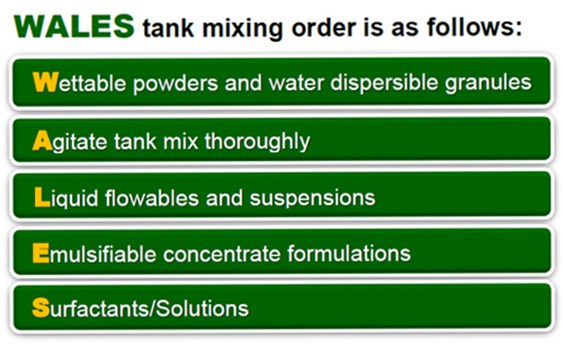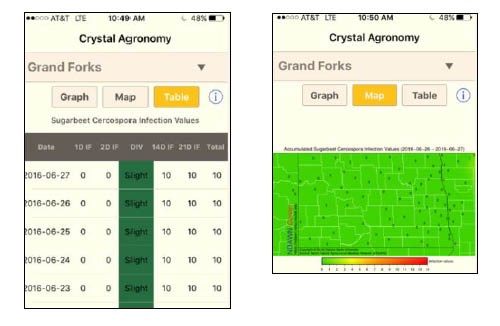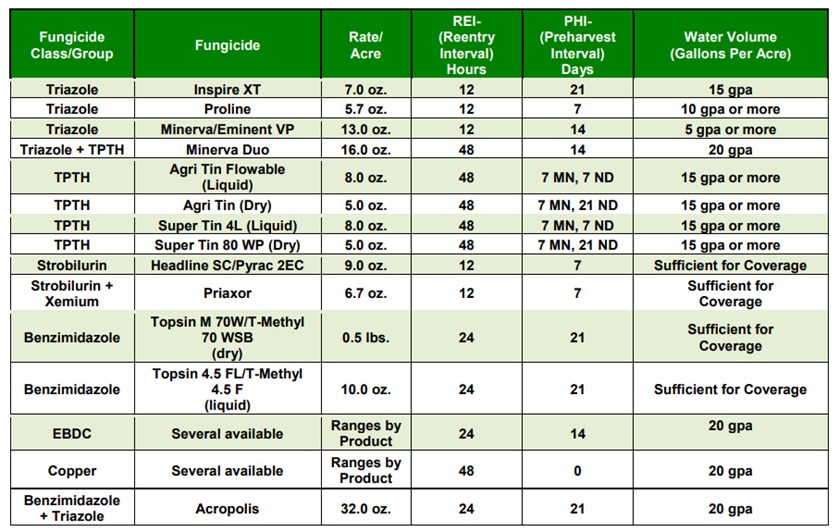605 - Cercospora Leafspot Management Notes
Last year’s Cercospora Leafspot (CLS) management throughout the Red River Valley was much improved compared to the prior two cropping seasons. The record overall tons received and record Recoverable Sugar per Acre are testaments to the successful CLS management techniques employed last year and demonstrates the tremendous synergy between the allied industry, research, and growers alike in managing CLS. To ensure CLS inoculum levels are kept at bay, we cannot relax CLS management efforts at all. Again this year, you will notice added management measures for reducing CLS inoculum presence amidst the increasing occurrence of fungicide resistance. Below are tactics to heed as was discussed this past winter at Your Way to Grow Meetings in your district:
- Starting Spray Program – Start early and stay on track once CLS is found in your area, based on observations in bullet #2. Will need to customize spray program around Preharvest and Pre Harvest Intervals.
- Scouting fields – Scout fields early and well looking for CLS presence and scouting during the year for evaluating how your spray program is working...making adjustments where needed. NDSU will have research plots for observation with possible adjustments for spray program in-season.
- Tank mixes – All fungicide applications should contain more than one chemistry or mode of action (only exception would be EBDC’s). Utilizing all available fungicide chemistry wisely is vitally important to current fungicide options today and tomorrow. Overall, any tank mix should be sprayed out as soon as possible, with agitation, do not allow mix to sit overnight, spray tank out completely, and rinse sprayer (all lines and tank) with clean water daily.
- Aerial Application – To stay on spray schedule with wet soils or if there are tank mixes you prefer not to use in your sprayer, consider aerial application
- Jar Test – If in doubt about a tank mix, run a jar test to see if combination is compatible before loading sprayer and finding out elsewise
- Full Rates – For these tank mixes, utilize full application rates of each tank mix partner, following label recommendations.
- Glyphosate tank mixes – We do not recommend tank mixes of CLS fungicides and Glyphosate as water volume requirements vary between glyphosate and CLS fungicide applications. Two different targets are involved here.
- Water volume – CLS fungicides require excellent coverage as nearly all are contact/coverage oriented products. 15 to 20 gallons of water per acre should be utilized. With dew on leaves in morning, consider 10-15 gallons. With dry leaves in the afternoon, consider 15 – 20 gallons.
- Pressure – Utilize nozzle manufacturers best recommended application pressure for maximum leaf coverage, higher pressure (80 psi) applications provide improved leaf coverage depending on spray tip chosen.
- Spray nozzles/tips – Obtain and use proper nozzles for fungicide application optimizing coverage on leaves, top and bottom, as best possible
- Tins (TPTH) – Tin (TPTH) to be used in only two applications per cropping season and only as a tank mix with other chemistry. Tins are vital to CLS management and concerns of overuse may incite further resistance concern. Pay attention to Preharvest intervals (PHI’s) as they range from 7 to 21 days.
- Triazoles – Triazoles are vital to CLS management and concerns of overuse may incite further resistance concern, just as TPTH. Alternate Triazoles if used twice in a spray season. Pay attention to Preharvest intervals (PHI’s) for Triazoles, they range from 7 to 14 to 21 days.
- Minerva Duo – Is a combination of a Triazole + TPTH in a premix formulation. Do not tank mix Minerva Duo with glyphosate.
- EBDC’s (Mancozeb/Manzate) – EBDC chemistry have been included in our fungicide management plan as a tank mix partner. Manebs are not as effective on CLS as Mancozeb’s.
- Headline/Priaxor/Pyrac (Strobilurin) – Amidst increasing resistance to this chemistry/mode of action, Headline/Priaxor remain in our recommendation for harvest frost deterrence and plant health benefits and only in concert with a tank mix of Tin (TPTH) at full rate. Your Agriculturist has resistance information pertaining to your region on Headline/Priaxor recommendations.
- Topsin (Benzimidazole) – To only be used with tank mix (e.g. Tins - TPTH) and only once per season.
- Infection values – The current Cercospora Model works well, pay attention to Daily Infection Values (DIV’s) and weather forecasts for fungicide application timing. Utilize the Crystal Agronomy App or monitor Cercospora Leafspot DIV’s (Daily Infection Values) at: https://ndawn.ndsu.nodak.edu/sugarbeet-cercospora.html
- Spray intervals – The time interval between applications should not exceed 12 days, plan best as possible around adverse weather conditions (rain, wind, hail). For EBDC’s, follow a 7-8 day spray interval, stretching these spray intervals equates to thin protection
- Starting Spray Program – Start early and stay on track once CLS is found in your area, based on observations in bullet #18. Will need to customize spray program around Preharvest and Pre Harvest Intervals.
- Variety Ratings – Know your variety ratings, CLS control should improve with better CLS variety rating. Better CLS variety ratings do not always allow fewer fungicide applications.
- Sprayers – Spray Air sprayers provide a benefit for fungicide applications, coverage is key here.
- Contact Your Agriculturist – For further details in regards to your growing region, please contact your Agriculturist.
Mixing order - for any pesticides, especially as we head into CLS spray season, WALES (or DALES mixing order if dispersible granule formulations are used):

2018 ACSC Cercospora Leaf Spot (CLS) Spray Program
Early to Mid-July (6-Spray Program)
- Application 1 – Triazole*** + EBDC
- Application 2 - EBDC
- Application 3 – Triazole*** + EBDC
- Application 4 –TPTH* + Benzimidazole**
- Application 5 - EBDC
- Application 6 - Headline + TPTH* or Priaxor + TPTH* (apply Aug 25 through 1st week of September)
Mid July (5-Spray Program)
- Application 1 – Triazole*** + EBDC
- Application 2 - TPTH* + Benzimidazole**
- Application 3 – Triazole*** + EBDC (apps 3 & 4 can be alternated)
- Application 4 – EBDC
- Application 5 - Headline + TPTH* or Priaxor + TPTH* (apply Aug 25 through 1st week of September)
Mid to Late July (4-Spray Program)
- Application 1 – Triazole*** + EBDC
- Application 2 - TPTH* + Benzimidazole**
- Application 3 – Triazole*** + EBDC
- Application 4 – Headline + TPTH* or Priaxor + TPTH* (apply Aug 25 through 1st week of September)
Late July to Early August (3-Spray Program)
- Application 1 – TPTH* + Benzimidazole**
- Application 2 - Triazole*** + EBDC
- Application 3 – Headline + TPTH* or Priaxor + TPTH* (apply Aug 25 through 1st week of September)
Early to Mid-August (2-Spray Program)
- Application 1 – Triazole*** + EBDC or Triazole*** + TPTH*
- Application 2 – Headline + TPTH* or Priaxor + TPTH* (apply Aug 25 through 1st week of September)
Late August (1-Spray Program)
- Headline + TPTH* or Priaxor + TPTH* (apply Aug 25 through 1st week of Sept.)
or
- Headline + Triazole*** or Priaxor + Triazole*** (apply Aug 25 through 1st week of Sept.)
or
- Triazole*** + EBDC or Triazole*** + TPTH*
or
- Benzimidazole + Triazole
* TPTH should NOT be used more than twice per year & used only at Full Rate
** Benzimidazole should be used only once per season and NEVER alone.
*** Triazoles not to exceed 50% of total applications in a season
- 12 day intervals on all products except EBDC alone is 7-8 days
- In tank mixing order, dry formulations go in first followed by liquids
- Always start with plenty of water and good agitation from start to finish
American Crystal Agronomy App
As a reminder, for keeping a close eye on Cercospora Leafspot development, the American Crystal Agronomy App is available and free, found at “the App Store” or “Google Play”.


